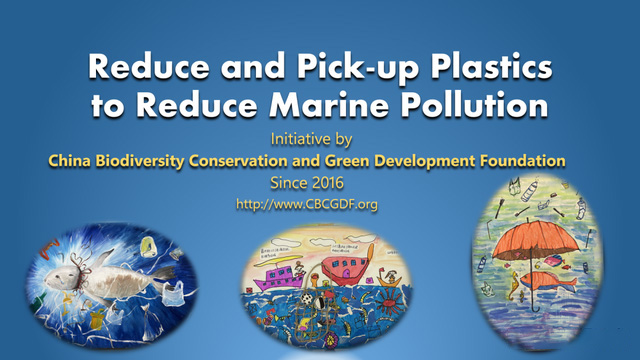The European Union's cosmetic regulation of

The environmental problems caused by cosmetics come mainly from two aspects: packaging and ingredients. As daily necessities used every day, cosmetics, similar to food, drugs and other health products, carry certain safety risks, which not only affect the health rights and interests of consumers, but also may cause reversible or irreversible impacts on hydrology, soil, the atmospheric environment and so on.

Beauty package, exquisite and romantic environmental burden
According to statistics, the cosmetics industry about 70% of the waste from the packaging, of which only about 5% can be recycled, the remaining 95% of the packaging materials are either reduced recycling, incineration, or sent to landfills, in hundreds or even thousands of years of time slowly decomposed. At present, the European Commission has been "yellow card" cosmetic packaging materials are mainly the following two:
1. Microplastics
The term "microplastics" was coined in 2004 by Professor Richard Thompson, a marine biologist at the University of Plymouth in the UK, to refer to pieces of plastic less than 5 millimeters in diameter, which are difficult to distinguish with the naked eye. The environmental pollution caused by microplastics is currently one of the most concerned topics in the scientific community and the general public.
There are two main sources of microplastics: primary microplastics and secondary microplastics. Primary microplastics are tiny plastic particles generated directly during the production process, such as those found in cosmetics, personal care products and cleaning products, while secondary microplastics are tiny particles (mostly cosmetic wrapping plastics) formed when large pieces of plastic waste decompose and break down in the environment. These difficult-to-decompose plastic fragments are difficult to remove once they enter the environment.
In September 2023, the European Commission adopted the microplastics restriction bill, which has been under discussion for many years, to restrict the placement of microplastics and their related products in the European Union by amending Annex XVII of the European Union's REACH regulation. This is also the most influential and wide-ranging restriction on microplastic pollution in the EU in recent years.

2. PLA
PLA (Polylactic Acid) is a biodegradable plastic with good processability and biocompatibility, as well as good rigidity and mechanical resistance, and is one of the main biodegradable packaging materials used for cosmetics, and is also widely regarded in the industry as a good plastic replacement material.
Compared to plastics like PET, PP or PE, which don't degrade for hundreds of years, PLA is indeed biodegradable, but the conditions are so harsh that it is not considered an environmentally friendly material in many regions.
On May 31, 2021, the European Commission issued the final version of the Single-Use Plastics Guidelines to restrict the use of single-use plastics, banning a wide range of single-use plastics including disposable cutlery and cotton swabs, with biodegradable plastics banned along with them without discrimination.
Toxic ingredients, improper disposal takes a heavy toll
One of the most widely recognized problems in the cosmetics industry is the use of toxic chemicals, which are widely used in the fine chemical industry chain, and the indiscriminate use and improper disposal of chemical materials can cause great damage to the ecosystem. Nowadays, the following ingredients have been "strictly prohibited" by the beauty and personal care industry in the EU or some European countries.

1. Triclosan
Triclosan is an antimicrobial agent widely used in soaps, toothpastes, mouthwashes, cosmetics, detergents and other household chemicals, usually at levels between 0.10 and 1.00%. Triclosan has been widely used for more than 50 years. Triclosan may also be labeled as Triclosan, Trichlorohydroxydiphenyl ether, Dichlorophenoxychlorophenol, TCS, etc. in the list of ingredients.
Triclosan is highly toxic to algae and produces carcinogenic dioxins when exposed to water and broken down by sunlight, and chloroform if exposed to chlorine. In addition, it has some negative effects on humans, water and soil.
In 2014, the European Commission banned the use of triclosan in cosmetics; in 2016, the European Commission still had not approved triclosan for use as an active substance in Class I bactericidal products.
China's current national standard on toothpaste is GB8372-2008, which began to be implemented on February 1, 2009, although triclosan is allowed to be added in the preservative, but clearly shall not exceed 0.3%, and in China's "Cosmetic Safety Technical Specification" (2015 version), the maximum allowable concentration of triclosan is 0.3%.
2. p-Phenylenediamine
P-Phenylenediamine (p-Phenylenediamine), also known as Urs D, is an organic compound with the chemical formula C6H8N2. p-Phenylenediamine reacts with oxygen to produce new colors. P-phenylenediamine has a strong affinity for keratin in hair, allowing for better color fixation during oxidation and longer lasting hair coloring results.
However, if p-phenylenediamine enters water sources, it can cause the death or even extinction of a wide range of aquatic organisms. p-phenylenediamine belongs to category 3 carcinogens in the list of carcinogens published by the International Agency for Research on Cancer (IARC) of the World Health Organization (WHO) on October 27, 2017, which is the most common carcinogen in the world. The European Union has banned 2-chloro-p-phenylenediamine (and its salts), although it has not yet declared the p-phenylenediamine component as a carcinogen, i.e., p-phenylenediamine-based hair dyes are highly sensitizing and have likewise been banned in the EU.
3. Dibutyl phthalate (DBP)
DBP is widely used in the production of nail polish and is also used in the manufacture of adhesives, dyes, pesticides, solvents for fragrances, and fabric lubricants. It is extremely toxic to aquatic organisms, and it may continually escape from materials and contaminate air, water, soil, and even food, with potential impacts on human health and possible harm to fetuses.
On December 18, 2018, the European Commission placed restriction requirements on four phthalates (DIBP, DEHP, DBP, and BBP): after July 7, 2019, toys or childcare articles containing DEHP, DBP, BBP, and DIBP in concentrations greater than or equal to 0.1% may not be placed on the market.On January 23, 2024, the European Chemicals Authority (ECHA) added five new chemical substances to the Substances of Very High Concern (SVHC) Candidate List and updated the existing Candidate List entry for dibutyl phthalate to include its endocrine disrupting properties in the environment.
4. ZPT
Zinc Pyrithione, INCI name ("International Standard Catalog of Cosmetic Ingredients in Chinese") Zinc Pyrithione (ZPT), CAS No. (American Chemical Abstracts Service (ACAS) numerical identification number of the substance) 13463-41-7, has a strong antimicrobial ability, can be used to improve the condition of dandruff by inhibiting overpopulation of "Malassezia", the fungal cause of dandruff in humans, and is not easily absorbed by the skin. It can improve the dandruff condition by inhibiting the overproliferation of the fungal dandruff-causing "Malassezia" and is not easily absorbed by the skin, so it has been widely used in anti-dandruff shampoos, and has been referred to as the "anti-dandruff big brother" in the industry. However, zinc pyrithione has a negative impact on the environment.
On November 3, 2021, the European Commission issued an amendment to add ZPT as a prohibited substance to the EU Cosmetics Appendix II regulation, effective from March 1, 2022 onwards. This means that ZPT will be officially banned in EU cosmetics.
5. Coal tar
Coal tar is one of the important products of the coking industry, and coal tar refining can be obtained from a variety of chemical products, many cosmetic raw materials in the fragrance is widely used in synthetic fragrances of coal tar.
However, coal tar processing generates a large amount of toxic wastewater, which contains high concentrations of organic matter, cyanide and other highly toxic substances and has a complex composition, which is toxic to almost all living organisms.
In 2014, the European Chemicals Agency (ECHA) amended the Registration, Evaluation, Authorization and Restriction of Chemicals (REACH) regulation to include a list of substances that have been or will be banned for use or sale in the European Union, including two substances derived from coal tar - anthracene oil and tar. In China, the EU and some Southeast Asian countries, coal tar is banned from daily chemical products, and the United States only allows the addition of this ingredient to certain prescription drugs.
6. PFAS
PFAS is a series of non-natural synthetic organic compounds, which is a collective name for nearly 5,000 perfluoroalkyl and polyfluoroalkyl compounds. In the cosmetics field, PFAS are often used in makeup products such as mascara, eyeliner, eye shadow, waterproof lipstick, and foundation. However, when PFAS is cleaned, wiped off, flushed down the drain, or flowed into sewage treatment stations, it may be encapsulated in sewage and sludge, and end up being sprayed as fertilizers on farmland or flowing into ditches, rivers, and other watercourses, causing serious water pollution.
On February 7, 2023, the European Union published a proposal for a PFAS restriction regulation drafted by five countries - Denmark, Germany, the Netherlands, Norway and Sweden. The European Chemicals Agency (ECHA) has published on its official website the nearly 10,000 PFAS proposed to be banned in the five EU countries.
In the latest version of China's "used cosmetic raw materials catalog" and "cosmetic banned raw materials catalog", the use of PFAS in cosmetics has not been clearly defined, to be further improved.
Make beauty last longer and lead the way in environmental protection
The European Union in cosmetics safety evaluation, risk assessment, as well as the implementation of norms carried out earlier, so in cosmetics regulations have a strict standard of safety review, safety assessment of the high frequency of updates and other characteristics. EU Cosmetics Regulation (EC) No 1223/2009 is currently the most reference and use of national cosmetic regulations, cosmetic safety assessment of China has an important reference and reference significance.
Currently, global environmental protection, sustainable development and ESG issues are going through a new stage of development from concept to practice, from "soft regulations" to "hard laws".
On March 15, 2024, the Council of the European Union approved the Corporate Sustainability Due Diligence Directive (CSDD). The European Parliament is scheduled to vote in plenary on the CSDD on April 24th, and if formally adopted, implementation will begin in the second half of 2026 at the earliest. As you can see, the CSDD is bound to have a profound impact on the globalized industry, including cosmetics, when it is finally adopted.

The European Union to restrict the use and ban a variety of raw materials and packaging materials, as well as continued efforts to promote the CSDD behind, highlighting the tightening of its member states on the safety of cosmetic raw materials, as well as the growing importance of sustainable development. This reminds the industry: the use of cosmetic ingredients must be more cautious and standardized, the use of cosmetic raw materials must give more consideration to green, environmentally friendly, harmless, which invariably raises the "threshold" of the domestic beauty out of the sea.
Cosmetic regulations of the European Union (EU) have had a profound impact on the construction of cosmetic regulations in China. With reference to the EU cosmetics regulatory experience, China has gradually strengthened and improved the regulatory system and regulatory system, such as product labeling, raw material prohibitions, test methods and evaluation standards, etc., are reflected. As seen in this paper, the EU's environmental and sustainable requirements for cosmetic raw materials and packaging in the decades from weak to strong, firm advancement of the domestic cosmetic enterprises should also be early layout, risk avoidance, in order to make the industry towards a more stringent, perfect, scientific and long-lasting direction of development.


